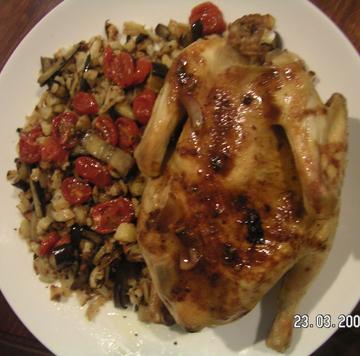Introduction
This daily exercise provides a structured framework for analyzing food choices in various real-world scenarios. By following these step-by-step processes, you can make more informed decisions based on nutritional value, cost-effectiveness, and personal/cultural preferences.
Exercise Framework
Step 1: Define Your Context and Goals
- Identify the specific scenario (grocery shopping, dining out, meal planning)
- Articulate your primary objectives (health improvement, budget management, cultural significance)
- Note any specific dietary requirements or restrictions
Step 2: Nutritional Value Assessment
-
Macronutrient Evaluation
- Analyze protein, carbohydrate, and fat content in relation to daily needs
- Consider the quality of these macronutrients (e.g., complex vs. simple carbohydrates)
- Reference WHO guidelines recommending 10-15% of calories from protein, 55-75% from carbohydrates, and 15-30% from fats
-
Micronutrient Analysis
- Identify key vitamins and minerals present
- Compare against daily recommended intake according to national dietary guidelines
- Consider how this food complements other daily food choices
-
Processing Level Consideration
- Evaluate the degree of processing using frameworks like NOVA classification
- Consider the presence of additives, preservatives, and their potential impacts
- Reference Mediterranean Diet principles that emphasize minimally processed foods
Step 3: Economic Analysis
-
Price-to-Nutrition Ratio
- Calculate cost per serving
- Determine cost per gram of protein/fiber or other key nutrients
- Compare similar food items to identify better value options
-
Long-term Budget Impact
- Consider shelf life and potential for waste
- Evaluate time cost for preparation
- Factor in potential health costs/benefits of consistent consumption
Step 4: Cultural and Personal Context
-
Cultural Significance Evaluation
- Identify the role of this food in your cultural traditions
- Consider the authenticity of preparation methods
- Analyze how this choice supports cultural food sovereignty
-
Sustainability Assessment
- Evaluate carbon footprint and environmental impact
- Consider local vs. imported options
- Reference initiatives like the EAT-Lancet Commission recommendations
-
Personal Preference Analysis
- Rate personal enjoyment on a scale of 1-10
- Consider how this food affects your mood and energy levels
- Evaluate alignment with personal values (e.g., ethical considerations)
Step 5: Decision-Making Integration
-
Weighted Decision Matrix
- Assign relative importance to each factor based on your current priorities
- Score each food option across all criteria
- Calculate weighted scores to determine optimal choices
-
Action Planning
- Document your decision and rationale
- Plan implementation (portion sizes, preparation methods)
- Schedule follow-up evaluation to assess satisfaction with the choice
Sample Daily Scenarios
Scenario 1: Grocery Store Cereal Aisle
Apply the framework to compare whole grain cereals versus sweetened options, considering:
- Nutritional density (fiber, added sugar, fortificants)
- Price differences and portion yields
- Marketing claims versus ingredient reality
- Cultural breakfast traditions in your household
Scenario 2: Restaurant Menu Navigation
Apply the framework when dining out by:
- Identifying preparation methods (steamed, fried, baked)
- Analyzing portion sizes versus nutritional needs
- Evaluating value proposition of various menu sections
- Considering cultural authenticity of cuisine offerings
Conclusion
This daily exercise encourages intentional food choices through systematic analysis rather than habitual selection. By practicing this framework regularly, you will develop stronger critical thinking skills specifically tailored to navigating the complex modern food environment.
For optimal results, document your analyses and review patterns over time to refine your personal decision-making process.





0 Comments